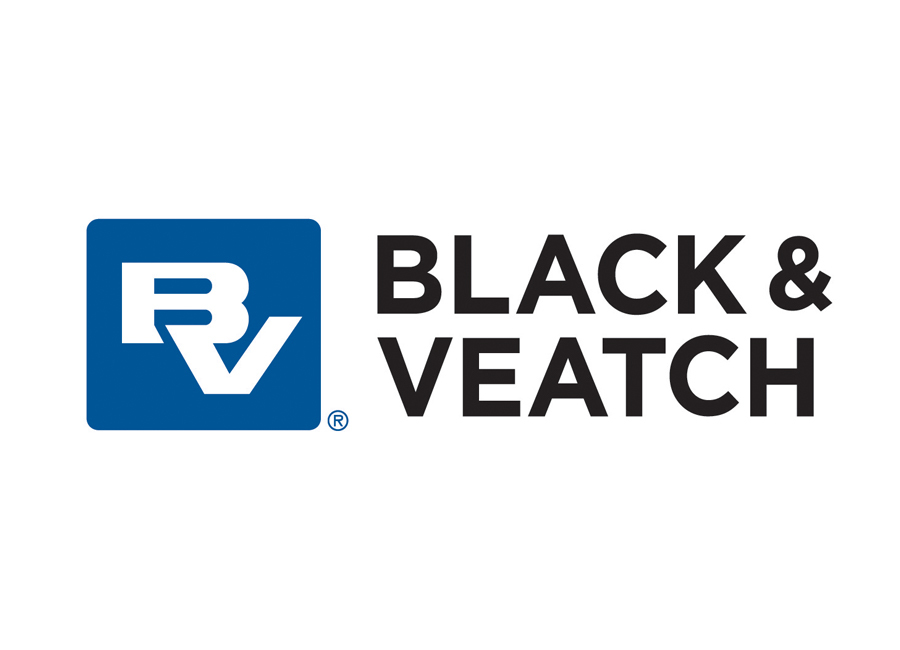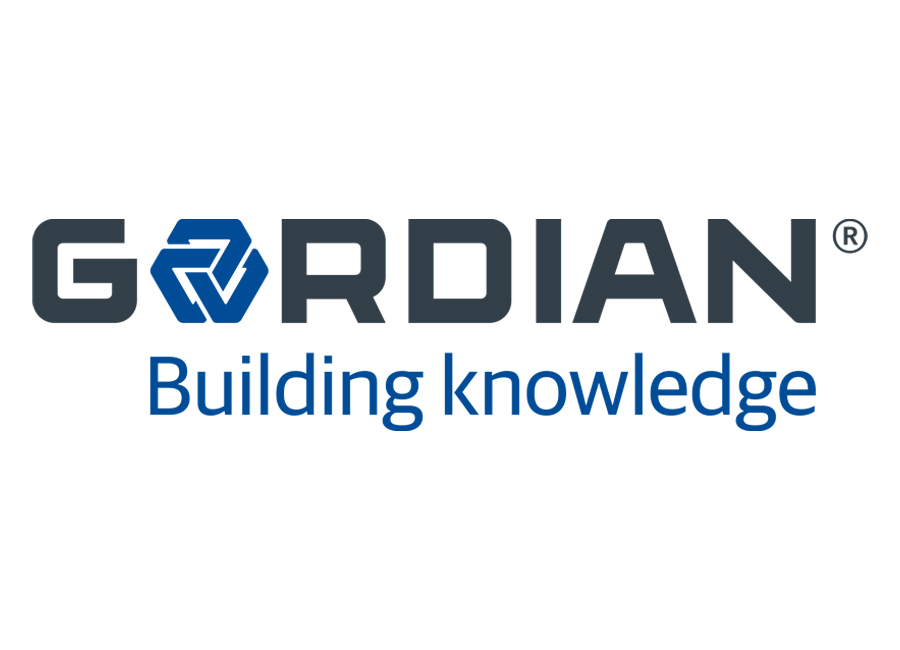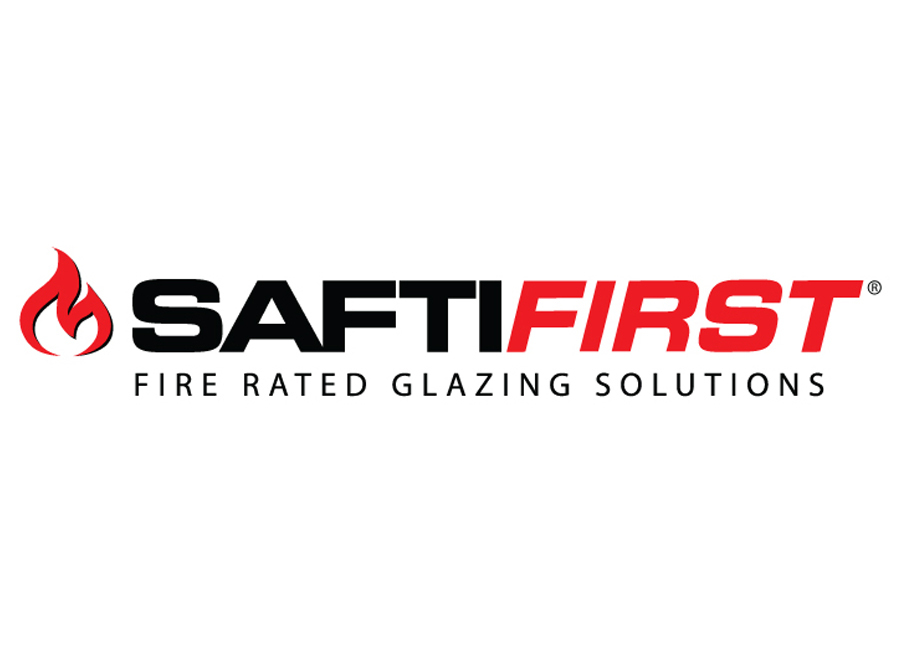
2021 Federal Design-Build Symposium
DBIA’s Federal Design-Build Symposium will provide federal teams with the innovative tools, design-build best practices, and federal policy insights needed to build high-performance teams delivering better projects — on-time and on-budget. From understanding the FAR to cutting edge design-build innovations, these sessions are designed to help federal design-build teams deliver on the promise of economic recovery.
-
Contains 4 Component(s), Includes Credits
Mr. McAndrew is the leading force at the Department of Defense on Military Construction (MILCON) reform and, specifically, Alternate Delivery Methods (ADM) and pre-award partnering with the Project Management Agreement (PMA). Attendees will get first-hand information on Mr. McAndrew’s vision and the important reforms being put in place at the very top of this vital and by far largest department in the Federal government. Mr. McAndrew will also discuss other key policy initiatives and updates on design-build projects underway or in the planning stage.
Mr. McAndrew is the leading force at the Department of Defense on Military Construction (MILCON) reform and, specifically, Alternate Delivery Methods (ADM) and pre-award partnering with the Project Management Agreement (PMA). Attendees will get first-hand information on Mr. McAndrew’s vision and the important reforms being put in place at the very top of this vital and by far largest department in the Federal government. Mr. McAndrew will also discuss other key policy initiatives and updates on design-build projects underway or in the planning stage.
Learning Objectives:
1. Attendees will learn about reforms in DOD’s Military Construction procurement.
2. Attendees will learn about Alternative Delivery Methods employed by DOD.
3. Attendees will learn pre-award partnering with Project Management Agreements.
4. Attendees will hear updates on design-build projects under way or in the planning stage.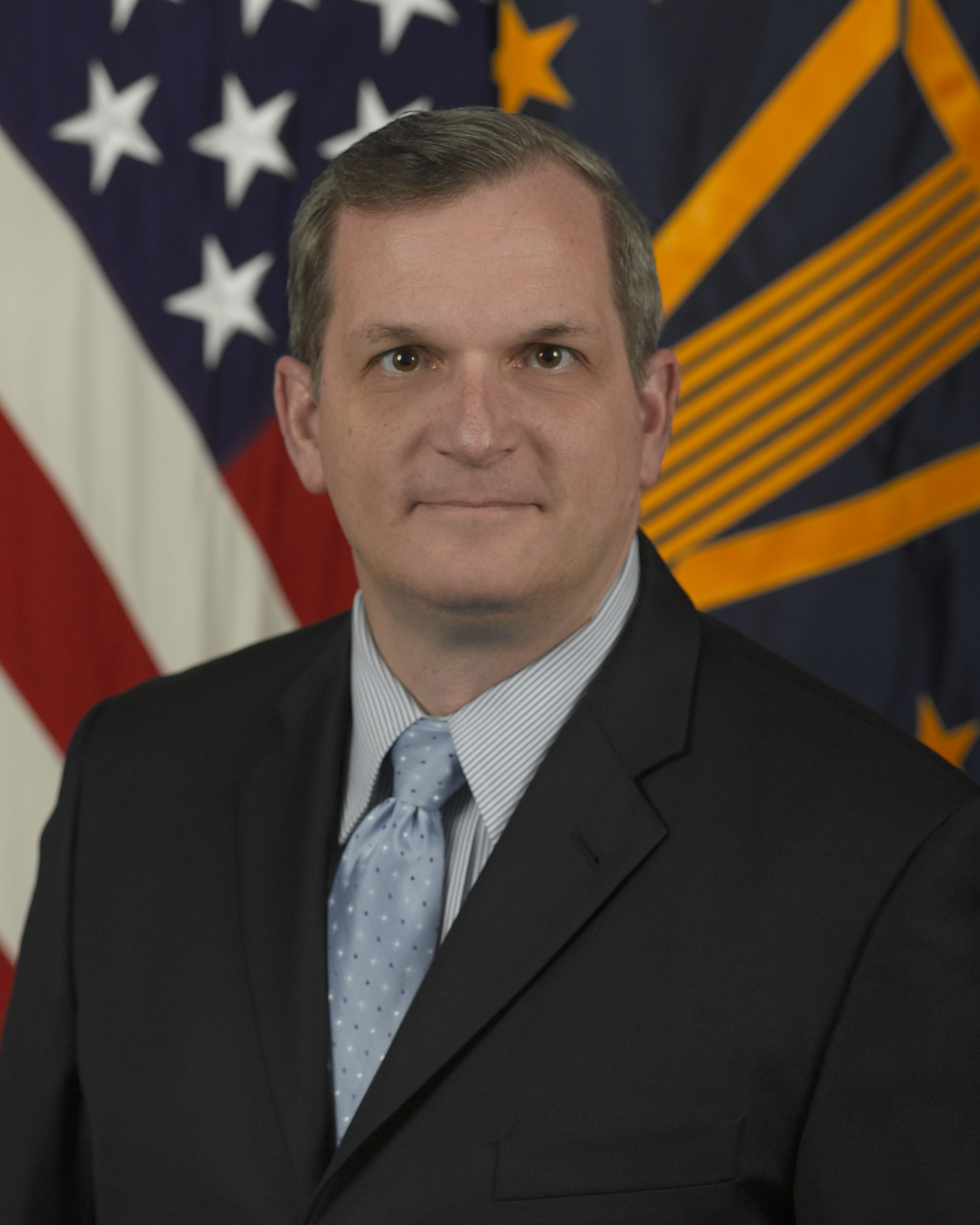
Michael McAndrew
Deputy Assistant Secretary for Defense for Construction
Department of Defense
Mr. Michael McAndrew is the Deputy Assistant Secretary of Defense for Construction within the Office of the Assistant Secretary of Defense (Sustainment). He provides executive leadership on all matters pertaining to DoD’s physical infrastructure, to include development and execution of policies, guidance, and procedures for construction, operations, maintenance and repair of DoD’s worldwide facilities to enhance and preserve warfighting capabilities and to provide safe working and living conditions for our military personnel and families. His responsibilities include all matters related to real property maintenance; facility operations; and host-nation programs related to facility construction and management.
Prior to assuming his current duties Mr. McAndrew served, as the Deputy Assistant Secretary of Defense for Facilities Management. In this capacity, his facilitates portfolio also included policy development and oversight of DoD’s housing portfolio, which included government-owned and privatized inventories. Prior to 2008, Mr. McAndrew served as the Deputy Director, Base Realignment and Closure Directorate, responsible for policy development and oversight of analysis supporting the 2005 Base Realignment and Closure (BRAC) round. He also previously served within the Office of the Secretary of Defense as the Deputy Director for Housing and Energy and the Assistant Director of Housing, responsible for DoD-wide policy development and issues related to the operation and ownership of government and private-sector housing for military use; and as the Assistant Director for Base Closure and Utilization, responsible for developing policy and procedures for the Department’s 1993 and 1995 BRAC rounds. Mr. McAndrew began his Department of Defense civilian employment in 1991 as a Presidential Management Intern within the Office of the Secretary of Defense.
Mr. McAndrew served on active duty as an officer in the United States Air Force from 1984 to 1991. After leaving active duty, he resumed his military career in 1995 when he entered the Air Force Reserves, serving as an Individual Mobilization Augmentee within the Office of the Assistant Secretary of the Air Force for Acquisition. He retired from the Air Force Reserves as a Lieutenant Colonel in 2009. Mr. McAndrew is a 1984 graduate of Virginia Polytechnic Institute and State University in Blacksburg, Virginia, where he earned a Bachelor of Arts degree in Business Management. In 1991, he attained a Master of Science degree in Contract and Acquisition Management from the Florida Institute of Technology in Melbourne, Florida. Mr. McAndrew completed the Federal Executive Institute Leadership for a Democratic Society program in 1999, and the National Security Study’s National Security Leadership Course at Maxwell School of Syracuse University in 2001. He was appointed to the Senior Executive Service in 2008.
-
Contains 4 Component(s), Includes Credits
Design-build is not new, but it is new to some. Further, those who have used design-build may not fully realize the flexibility the Federal Acquisition Regulation actually allows. This session will be a deep dive into the FAR Subpart 36.3 - Two-Phase Design-Build Selection Procedures - with a focus on the unique flexibility it offers. This session will explicitly tie Design-Build Done Right™ Best Practices with the relevant sections of the FAR and delve into other tools available to Federal agencies that, taken together, unlock the innovation and collaboration inherent in successful design-build projects. Further, the session will supply real-world examples of the FAR in action on design-build projects across a variety of Federal agencies.
Design-build is not new, but it is new to some. Further, those who have used design-build may not fully realize the flexibility the Federal Acquisition Regulation actually allows. This session will be a deep dive into the FAR Subpart 36.3 - Two-Phase Design-Build Selection Procedures - with a focus on the unique flexibility it offers. This session will explicitly tie Design-Build Done Right™ Best Practices with the relevant sections of the FAR and delve into other tools available to Federal agencies that, taken together, unlock the innovation and collaboration inherent in successful design-build projects. Further, the session will supply real-world examples of the FAR in action on design-build projects across a variety of Federal agencies.
Learning Objectives:
1. Attendees will learn about reforms in DOD’s Military Construction procurement.
2. Attendees will learn how design-build best practices fit into the FAR
3. Attendees will learn of other tools available to Federal agencies beyond the FAR that unlock the advantages of design-build
4. Attendees will learn about real-world examples of design-build delivered in compliance with the FAR.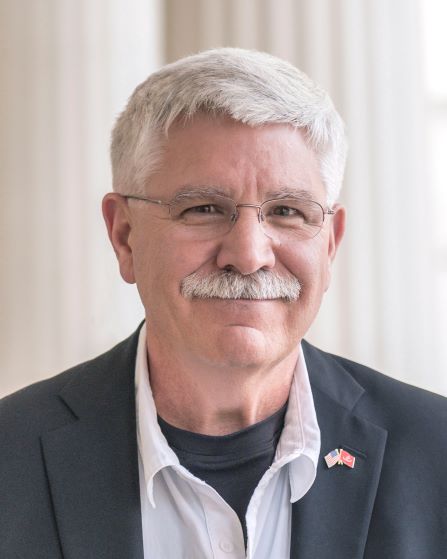
Craig H. Unger, FDBIA
Principal
Unger Security Solutions, LLC
Craig Unger is Principal and CEO of Unger Security Solutions, LLC, providing consulting services for acquisition management; project delivery; and advisory services for the security and detention environment. Mr. Unger founded the business upon his retirement from the federal government in 2003.
Mr. Unger was appointed by the Attorney General of the United States in August 2001, to serve as the Justice Department's Federal Detention Trustee. As a career civil servant with over 26 years of service, Mr. Unger achieved the highest leadership role (Senior Executive Service) before retiring as a Federal Law Enforcement Officer with the Justice Department.
Additionally, Mr. Unger served as President of the Design-Build Institute of America (DBIA 2003 – 2004) and is regarded as a leader of the integrated project delivery design-build movement in the public sector.
Mr. Unger has an extensive background in various alternative disputes resolution (ADR) techniques to include Facilitating numerous Partnering Workshops, Mediation Services, and a former member of the Washington Metropolitan Area Transportation Authority Disputes Resolution Board.
Mr. Unger is a nationally recognized lecturer throughout the industry and has authored numerous articles and publications, including US Congressional reports and testimony. He received a BA in Accounting from Bloomsburg University; a MBA from West Virginia University; and attended Harvard University for post graduate work. He is also a Veteran of the US Marine Corps.
Craig is also the winner of DBIA’s Brunelleschi Lifetime Achievement Award, the highest honor DBIA bestows.
-
Contains 4 Component(s), Includes Credits
Successful motivation requires a well-written contract that provides appropriate rewards and incentives. In traditional design-bid-build, contracts often contemplate only failure, with provisions and clauses that address what the aversive consequences will be once failure occurs. This presumption of failure results in contracts that do not contemplate how the contracting parties might appropriately reward one another for success and excellent performance. The most powerful design-build contracts, on the other hand, are written to include things such as award fees and incentives to promote cooperation, teamwork and collaboration. Combined with the effective use of performance requirements, these “aspirational contracts” help the contracting parties to achieve extraordinary success.
Successful motivation requires a well-written contract that provides appropriate rewards and incentives. In traditional design-bid-build, contracts often contemplate only failure, with provisions and clauses that address what the aversive consequences will be once failure occurs. This presumption of failure results in contracts that do not contemplate how the contracting parties might appropriately reward one another for success and excellent performance. The most powerful design-build contracts, on the other hand, are written to include things such as award fees and incentives to promote cooperation, teamwork and collaboration. Combined with the effective use of performance requirements, these “aspirational contracts” help the contracting parties to achieve extraordinary success.
Learning Objectives:
1. Attendees will learn about the difference between punitive and incentive contracting to reward accomplishments.
2. Attendees will learn how to effectively use performance requirements in contracting.
3. Attendees will specifically learn how to promote cooperation, teamwork and collaboration.
4. Attendees will learn tips on well written contracts.
Richard J. Formella, PMP, DBIA, CPPO
President
Design-Build Strategic Solutions, LLC
Richard J. Formella is the President of Design-Build Strategic Solutions, LLC, a design & construction contracting process consulting firm. He recently retired from federal service as Chief of the Bio-Containment Procurement Branch for the Department of Homeland Security (DHS). He has over 32 years of federal acquisition/contracting experience and joined DHS in 2006 serving as a Head of the Contracting Activity through 2014. Prior to joining DHS, Mr. Formella was employed by the Department of Justice (DOJ), Federal Bureau of Prisons (BOP) for over 20 years and concluded his service at BOP as the Chief of Construction Contracting where he led and administered the $3.0 billion dollar new federal prison construction contracting program. At the DHS he led the team providing design and construction contracting support for the DHS Science and Technology Directorate for major laboratory renovations and new construction an overall $1.5 billion program, including the $1.3 billion National Bio & Agro Defense Facility.
Mr. Formella is a 1986 graduate of the FLETC, and holds a BS in Forest Management from the University of Wisconsin – Stevens Point; a Masters Certificate in Project Management from Regis University, and a MS in Management – Leadership and Organizational Effectiveness from Troy University. He is a certified Project Management Professional (PMP), a designated Design-Build Professional (DBIA) and a Certified Public Procurement Officer (CPPO).
-
Contains 4 Component(s), Includes Credits
What does it take to be part of an award-winning project/team? Hear first-hand from DBIA’s 2020 project/team awards winners and awards jury members the magic behind the success. Representatives from two (2) projects (including both the Owner agency and the design-builder) will discuss the aspects of the project’s success that drove them to submit it for an award, why the design-build model was beneficial for the team and the project and lessons learned that others can use to leverage similar success.
What does it take to be part of an award-winning project/team? Hear first-hand from DBIA’s 2020 project/team awards winners and awards jury members the magic behind the success. Representatives from two (2) projects (including both the Owner agency and the design-builder) will discuss the aspects of the project’s success that drove them to submit it for an award, why the design-build model was beneficial for the team and the project and lessons learned that others can use to leverage similar success.
Learning Objectives:
1. Attendees will hear from winning team members about their experience with crafting a winning entry.
2. Attendees will learn about aspects of winning projects that drove teams to submit their entries.
3. Attendees will hear about how design-build itself led to the project’s success.
4. Attendees will hear from jury members how they judged the winning entries.
Harlen Castillo
Federal Bureau of investigation
Harlen has over 20 years of combined government and private sector commercial construction experience. She started out in the private sector where she worked for multiple leading General Contractors and held positions in preconstruction and project management. In 2012, she transitioned to the government as a Senior Project Manager spearheading real estate and construction portfolio management projects. In 2016, she joined the FBI as a Program Manager and has continued to lead and execute multiple large-scale projects and initiatives across the organization. She holds an MBA from Mount St. Mary’s University and a Bachelor’s in Business Administration from University of Maryland Global Campus.

Arun Kaiwar
Senior Principal, Buildings
Stantec Consulting
Arun has led many of Stantec’s marquee Alternate Delivery Buildings projects in California, that have garnered numerous regional, national and global industry awards. He synthesizes his experience in various alternate project delivery types including Design-Build, Lean Integrated Project Delivery, and Public Private Partnerships in the design and delivery of complex and highly sustainable building projects.
Brian Maximuk, DBIA
Project Manager
Hensel Phelps
Brian has 15+ years of proven construction experience spanning multiple market sectors and contract delivery methods. Brian has successfully completed four Design-Build projects, the most current being the San Ysidro Land Port of Entry Phase 2 project where he led the team to complete on time and under budget. Brian is passionate about construction and particularly the Design-Build model which brings the Owner, Architect and Contractor together with a single focus to deliver world class projects.

David J. Pastrick
Vice President
Clark Construction Group, LLC
Dave is a 20+ year construction veteran who started in Chicago before coming to Washington DC in 2002. Early in his career, he was a carpenter, surveyor, and estimator, before transitioning to operations. Dave has helped in the successful delivery of many local high-profile projects including 1700 K Street, 505 9th Street, Nationals Park, and 111 K Street. Since 2010, Dave has helped lead the pursuit and execution of $2.5B of federal projects in the Mid-Atlantic region, including the design-build delivery of the U.S. Coast Guard Headquarters and FBI Central Records Complex, along with Building 3250 at Fort Belvoir, ECPS1 and ECB2 at Fort Meade, Hangar 21 at Joint Base Andrews, in addition to several other secure mission-critical facilities. He holds a bachelor’s degree in Construction Engineering and Management from Purdue University, is a DBIA Design-Build Professional, ACE Mentor, and serves on the board of directors for Bread for the City in Washington, DC.

Jared Price
U.S. General Services Administration
Jared Price is a capital project manager at the General Services Administration (GSA) for their Mid-Atlantic region. He began his career with GSA in 2008 and has successfully delivered many federal design and construction projects.

Sonja Shields, AIA, LEED AP
Associate Vice President
HGA Architects and Engineers
Sonja Shields brings over 25 years of experience in architectural design with a focus on large scale, complex design-build projects for government clients. At HGA she provides project management services and is the architect of record working directly with owners, contractors and other design-build team members. Sonja holds an M. Arch from the University of Maryland and a B.A. from St. Olaf College. She is a registered architect, a member of AIA, and a LEED accreditation.

Stella S. Fiotes, AIA, DBIA
Executive Director, Office of Construction & Facilities Management, (Retired)
U.S. Department of Veterans Affairs (Ret.)
Stella is an architect experienced in planning, designing and building complex medical and research facilities. In the Federal Government she led facilities programs at four agencies, delivering buildings for biomedical research, climate monitoring, measurement & standards, and healthcare services to our nation's veterans. Since retiring from Federal service, she provides her expertise and leadership to construction and healthcare organizations and advises on facility initiatives for the VA. Stella is a registered architect and DBIA-certified professional.
Prior to assuming this position, Ms. Fiotes was the Chief Facilities Management Officer at the National Institute of Standards and Technology (NIST) from 2007, where she oversaw the construction, operation and management of the NIST sites until arriving at the Department of Veterans Affairs. Prior to her work at NIST, she managed facilities, construction and property for the National Oceanic and Atmospheric Administration at their sites across the country and led the facilities planning programs at the National Institutes of Health.
Ms. Fiotes holds a Masters in Architecture and Urban Design from the Technical University of Berlin, Germany. She is a Registered Architect in Washington, D.C., and is affiliated with the American Institute of Architects (AIA), AIA Regional and Urban Design Committee, Society for College and University Planners and Society of American Military Engineers.

Thomas Kurmel, DDES, AIA, DBIA, FHFI
President
TDK Consulting, LLC
Thom is president of TDK Consulting, LLC, A VA Certified Service Disabled Veteran Owned Small Business, specializing in health systems design, organizational performance, business and operational planning, and infrastructure strategies for both the public and private sector.
While on Active Duty, Thom served from May 2004 to June of 2009 as the Senior Military Advisor and Chief of Staff to the Assistant Secretary for Health Affairs in the Office of the Secretary of Defense at the Pentagon. From May 2002 he led planning, budgeting, and acquisition of all DoD medical facilities as Director, Facility Life Cycle Management Operations, in the Office of the Assistant Secretary of Defense for Health Affairs.

Jill Manzi
General Services Administration
-
Contains 4 Component(s), Includes Credits
The U.S. Army Corps of Engineers (“USACE”) was the tip of the spear for the massive, emergency Federal response to COVID-19. Design-build was chosen as the project delivery methodology. Why? Because no other project delivery methodology could have accomplished what many described as an architecture, engineering, and construction (“AEC”) miracle. A miracle repeated 38 times across the country, converting convention centers, arenas, hotels, mothballed prisons and hospitals into alternative care facilities (“ACFs”) with days or weeks. Days or weeks! Come hear how the AEC community rose to the occasion in repeatable success stories, partnered with USACE, and made miracles happen.”
The U.S. Army Corps of Engineers (“USACE”) was the tip of the spear for the massive, emergency Federal response to COVID-19. Design-build was chosen as the project delivery methodology. Why? Because no other project delivery methodology could have accomplished what many described as an architecture, engineering, and construction (“AEC”) miracle. A miracle repeated 38 times across the country, converting convention centers, arenas, hotels, mothballed prisons and hospitals into alternative care facilities (“ACFs”) with days or weeks. Days or weeks! Come hear how the AEC community rose to the occasion in repeatable success stories, partnered with USACE, and made miracles happen.”
Learning Objectives:
1. Attendees will learn why design-build was chosen to build Alternative Care Facilities.
2. Attendees will hear how the teams accomplished the “miracle” of creating the ACFs rapidly.
3. Attendees will hear about how the supply chair communication and flexibility was essential.
4. Attendees will hear about how convention centers, arenas and hotels were effectively converted.
Daria Van Liew, P.E., DBIA
Deputy Chief, Construction Division
U.S. Army Corps of Engineers, Baltimore District
Daria Van Liew has over 30 years of experience with the U.S. Army Corps of Engineers, Baltimore District and is currently the Chief, East Campus Integrated Program Office at the Baltimore District. In her current position, Mrs. Van Liew is responsible for execution of a $4B+ design and construction program. Mrs. Van Liew served as the leader for the District’s Alternate Care Facility Task Force in response to COVID-19. In addition, she currently serves as an instructor for PROSPECT 182, Contracting Officer’s Workshop. Mrs. Van Liew has served as the Interim Chief, Construction Division and Deputy Chief, Construction Division and an Administrative Contracting Officer (ACO) responsible for providing senior management oversight for the Construction Division Branches and Bay Area Office, Capital Area Office and East Campus Area Office construction staffs as the District executed a $1.5+ billion construction program. Previous assignments include Area Engineer and ACO for Bay Area Office, Resident Engineer and Contracting Officers Representative for Ft. Meade Resident Office, civil works Project Manager for Programs and Project Management Division, and Project Engineer for Bay Area Office.

Brent E. Willson, AIA, FHFI
Principal, Federal Health
HKS, Inc.
Brent Willson, as the Director of Federal Health and Principal for HKS, leads the Federal Health practice utilizing his 35 years of experience in design and planning for the Veterans Administration (VA), Air Force, Army, and Navy. Brent has been involved in numerous design build projects since 2010. Some of Brent’s notable projects include Brooke Army Medical Center, Bassett Army Community Hospital, Walter Reed National Military Medical Center, Camp Pendleton Replacement Hospital, Ambulatory Care Facility- VA El Paso, and the Carl R Darnall Replacement Hospital. Brent is an Architect and is a member of the American Institute of Architects (AIA) and a Fellow in the Health Facility Institute (FHFI). Brent contributes his passion through quality health facility design, and to the quality of healthcare provided to the men and women in our military, their families, and our veterans.

Ryan McKenzie, Assoc. DBIA
Project Executive
Clark Construction Group, LLC

David B. Morrow
Deputy District Engineer for Programs and Project Mgmt. Div.
U.S. Army Corps of Engineers, Baltimore District
Deputy District Engineer for Programs and Project Management; Baltimore District, U.S. Army Corps of Engineers. Baltimore District is one of six Districts in the North Atlantic Division. Baltimore District employs over 1100 people executing hundreds of projects annually including military design & construction, civil planning, design & construction, and environmental restoration.
Previous assignments include Chief, Environmental & Munitions Design Center, program manager for Washington, D.C. area, Baltimore District program manager for Environmental Protection Agency, Base Operations Engineer for a U.S. Army Reserve command, and industrial engineer at the Directorate of Public Works, Fort Meade, MD.

Jim L. Whitaker, FAIA, NCARB, FDBIA
Shareholder Principal and SVP
HKS, Inc.
Mr. Whitaker is an architect and lifelong design-build advocate, influencer, and educator. He is nationwide speaker and published author. Mr. Whitaker has served in executive leadership roles in both design and construction firms. Based in Dallas, Texas, he currently leads the government practice and all things alternative project delivery at one of the nation’s largest architectural firms, HKS, Inc. Extraordinarily rare, he was elected a Fellow of both AIA and DBIA in 2018. For DBIA, he currently serves as the Chancellor of the College of Fellows, serves as the Chair of the Federal Markets Committee, serves as member of the National Development Board, and serves as liaison to the P3 Committee. Previously, he served on DBIA’s national Board of Directors and was its Chairman in 2014. For AIA, he has served in national roles in its Federal Architects Task Group (FATG) and Project Delivery Knowledge Community (PDKC). Today, he also serves on the board of directors of the Construction Industry Round Table (CIRT). Mr. Whitaker lives in North Carolina.
-
Contains 4 Component(s), Includes Credits
Design Excellence is about much more than what the building looks like; design excellence reflects the practice of good judgment throughout project procurement, development and execution, as well as sound decision-making within the limitations imposed by budget, scope and schedule. Design Excellence achieves memorable design solutions that include state- of-the art engineering solutions, delivering facilities that are high performance and sustainable and that demonstrate a holistic design awareness that considers context, site and the environment. The Owner plays a significant role in setting the expectations, goals, requirements and best practices for any Design Excellence project. This session will provide an overview, brief history and examples of the U.S. General Services Administration’s (GSA) Design Excellence program and the GSA Design-Build Design Excellence guide. While the specifics discussed will be about how Design Excellence is practiced at the GSA, all the techniques and processes can be universally applied to other public and private Owner organizations.
Design Excellence is about much more than what the building looks like; design excellence reflects the practice of good judgment throughout project procurement, development and execution, as well as sound decision-making within the limitations imposed by budget, scope and schedule. Design Excellence achieves memorable design solutions that include state- of-the art engineering solutions, delivering facilities that are high performance and sustainable and that demonstrate a holistic design awareness that considers context, site and the environment.
The Owner plays a significant role in setting the expectations, goals, requirements and best practices for any Design Excellence project.
This session will provide an overview, brief history and examples of the U.S. General Services Administration’s (GSA) Design Excellence program and the GSA Design-Build Design Excellence guide. While the specifics discussed will be about how Design Excellence is practiced at the GSA, all the techniques and processes can be universally applied to other public and private Owner organizations.
Learning Objectives:
1. Understand the owner’s role in defining design excellence.
2. Understand the value proposition behind Design/Build Design Excellence and how true design excellence is defined.
3. Understand how design excellence has evolved into a holistic discipline that is practiced throughout the project delivery lifecycle.
4. Find documents and tools available to help other owners develop design excellence programs.
Laura Stagner, FAIA, PMP, DBIA
GSA Public Buildings Service, Office of Project Delivery (Retired)
Stagner Consulting, LLC; U.S. General Services Administration (Retired)
Laura Stagner is the former Assistant Commissioner for the Office of Project Delivery for the Public Buildings Service (PBS) of the US General Services Administration. In this role, Laura led the successful consolidation of project management functions within the into the Office of Project Delivery, evolving an organization that was responsible for capital projects into an organization that is now responsible for all projects delivered by PBS, including capital, small, and reimbursable projects. Under her leadership, the Office of Project Delivery developed processes designed to better manage project risk: a national project resource board to ensure that the best available talent is matched to the risk profile of the project, and a project delivery method selection tool. Laura has been an advocate for the adoption of alternative delivery methods within PBS, particularly design/build and Construction Manager at Risk. She has served on the national board of the Construction Management Association of America (CMAA), and is currently on the national board of the Design Build Institute of America (DBIA). Additionally, she has been an appointed member of the American Institute of Architects (AIA) Project Delivery Knowledge Committee since 2016.
Laura is currently the principal at Stagner Consulting, LLC, a practice devoted to providing federal project delivery advisory services.

Thomas Foley, PE, CCM
Deputy Commissioner
New York City Department of Design and Construction
Tom Foley currently manages the overall direction of New York City’s Department of Design & Construction (DDC) Public Buildings Division, supported by almost 450 executives, managerial, professional and administrative staff with over 711 active projects, serving 26 client agencies with portfolios valued at over $10 billion dollars. He is responsible for the management of the design & construction of the Public Buildings Capital Program including Civic, Uniform Structures and Project Controls such as Cultural Institutions, Libraries, Public Safety, Health & Human Services within the City’s five (5) Boroughs. Tom has guided DDC towards an integrated design-build project delivery approach with an emphasis on Design-Build Done Right® for New York City’s DB projects.
-
Contains 4 Component(s), Includes Credits
In this presentation, FMI’s experts will discuss fresh insights around key leadership competencies needed to run successful complex projects (including larger projects, more than $500 million). The research is based on data collected from interviews with dozens of industry leaders over the past three years and addresses questions such as: • What are key behaviors that make great project leaders stand apart from average ones? • What is unique about their style? • How do you develop such leaders? • What specific leadership competencies make a real difference on complex projects? • What steps can organizations take to identify, develop and retain such leaders over time?
In this presentation, FMI’s experts will discuss fresh insights around key leadership competencies needed to run successful complex projects (including larger projects, more than $500 million). The research is based on data collected from interviews with dozens of industry leaders over the past three years and addresses questions such as:
• What are key behaviors that make great project leaders stand apart from average ones?
• What is unique about their style?
• How do you develop such leaders?
• What specific leadership competencies make a real difference on complex projects?
• What steps can organizations take to identify, develop and retain such leaders over time?Learning Objectives:
1. Attendees will learn, from fresh information, about the key behaviors that make great project leaders stand apart from average ones.
2. Attendees will hear about how to develop such leaders.
3. Attendees will learn about specific leadership competencies that make a real difference on complex projects.
4. Attendees will hear about steps organizations can take to identify and develop great project leaders and keep them.
Tracey E. Smith
Leadership Consultant
FMI Corporation
As a consultant for the Leadership and Organizational Development practice at FMI, Tracey is passionate about helping leaders and organizations become the best and most effective version of themselves. Her primary work focuses on collaborating with clients to build exceptional leadership and project teams, create executive succession plans and drive individual leadership development through training and organizational consulting.
Prior to joining FMI, Tracey served in the Air Force for 20-years as an Aircraft Maintenance officer. Her hands-on experience of leading teams ranging from seven to 1,000 people provided her excellent insight into the opportunities and challenges faced by leaders at multiple levels. She created leadership development programs for multiple organizations throughout her career and leverages that experience in her current role. In addition, she led the development and communication of the Air Force Logistics strategic plan that impacted over 204,000 personnel. That plan included a human capital strategy, which was a first for the logistics community.
Tracey holds a Bachelor of Science in psychology from the United States Air Force Academy and master’s degrees in human resource development and counseling and leadership development. She loves the outdoors and spends as much time possible hiking and fly fishing with friends and family. She shares her passions with others as a volunteer with Project Healing Waters Fly Fishing and Team Rubicon
-
Contains 4 Component(s), Includes Credits
All players working together on a project want success. The Owner is key to setting the stage for success, starting with how they procure design-build services, and how they contribute to creating and maintaining a positive, collaborative environment. But what makes a good Owner? What attributes do top design-builders look for in finding that “good” Owner? Just as Owners make decisions on which firms to shortlist, industry makes choices on what projects to pursue. Among the many factors considered along with the attributes of the project are the Owner’s approach to the project (for example, what does the RFP look like?), and the reputation of the Owner (has the Owner treated industry fairly as partners all through other projects?). The panel of experienced design-builders will discuss each phase of a project, from procurement, to contracting to execution and the key Owner attributes industry looks for in a good partner. Further, there will be concrete examples of bad behaviors, practices, and mentalities. This session will be an eye-opening discussion and the presenters look forward to extensive audience engagement so all – Owners and practitioners – can gain new insights.
All players working together on a project want success. The Owner is key to setting the stage for success, starting with how they procure design-build services, and how they contribute to creating and maintaining a positive, collaborative environment. But what makes a good Owner? What attributes do top design-builders look for in finding that “good” Owner? Just as Owners make decisions on which firms to shortlist, industry makes choices on what projects to pursue. Among the many factors considered along with the attributes of the project are the Owner’s approach to the project (for example, what does the RFP look like?), and the reputation of the Owner (has the Owner treated industry fairly as partners all through other projects?).
The panel of experienced design-builders will discuss each phase of a project, from procurement, to contracting to execution and the key Owner attributes industry looks for in a good partner. Further, there will be concrete examples of bad behaviors, practices, and mentalities. This session will be an eye-opening discussion and the presenters look forward to extensive audience engagement so all – Owners and practitioners – can gain new insights.
Learning Objectives:
1. Recognizing that Owners are key to a project’s success, attendees will learn about the qualities of an effective Owner.
2. Attendees will learn how an Owner is essential to establishing and maintain a positive, collaborative environment.
3. Attendees will hear about Owner-specific factors that, along with a project, will encourage top design-builders to pursue a project.
4. Attendees will learn about how disengaged Owners increase project risk and can lead to project failure
Stacey G. Barton
Federal Division Leader - VP
Haskell
Stacey Barton leads the Federal Division and is responsible for profit and loss, operations, development of opportunities, engineering partnerships, and project execution. She oversees all ongoing projects, forecasts revenue, and develops the business plan. Prior to her current position, Stacey held several key positions at Haskell, such as assistant project manager, project manager, director of Construction, vice president of Construction, vice president of Operations, and chief of staff to the COO. She has worked in multiple delivery groups and markets executing a broad spectrum of project types, including federal, schools, hospitals, commercial office buildings, water/wastewater facilities, student housing, ports & harbors, and food & beverage facilities (EPC).
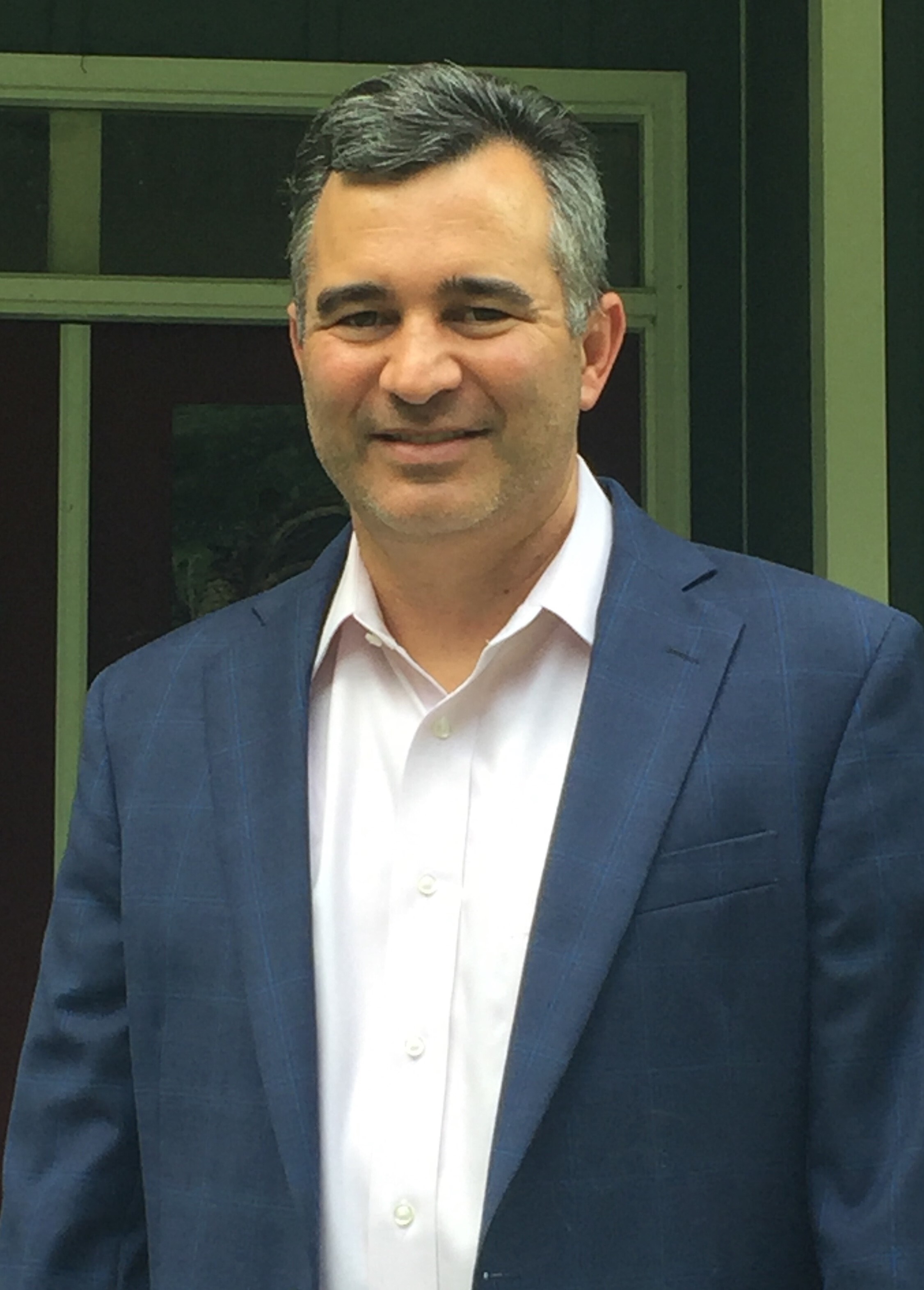
John Keith
Vice President
The Whiting-Turner Contracting Company
John Keith is a Vice President with The Whiting-Turner Contracting Company working out of the Baltimore, MD, office. Keith has worked his entire 28-year career with WT since graduating from Virginia Tech in 1993. Most of Keith’s career has been on federal projects for clients that include the Navy (NAVFAC), GSA, NASA and the Coast Guard. Keith has also worked for non-federal clients such as Lockheed Martin, MGM, University of Maryland and Weller Development. Keith lives in Severna Park, MD, with his two teenage sons.

Jim L. Whitaker, FAIA, NCARB, FDBIA
Shareholder Principal and SVP
HKS, Inc.
Mr. Whitaker is an architect and lifelong design-build advocate, influencer, and educator. He is nationwide speaker and published author. Mr. Whitaker has served in executive leadership roles in both design and construction firms. Based in Dallas, Texas, he currently leads the government practice and all things alternative project delivery at one of the nation’s largest architectural firms, HKS, Inc. Extraordinarily rare, he was elected a Fellow of both AIA and DBIA in 2018. For DBIA, he currently serves as the Chancellor of the College of Fellows, serves as the Chair of the Federal Markets Committee, serves as member of the National Development Board, and serves as liaison to the P3 Committee. Previously, he served on DBIA’s national Board of Directors and was its Chairman in 2014. For AIA, he has served in national roles in its Federal Architects Task Group (FATG) and Project Delivery Knowledge Community (PDKC). Today, he also serves on the board of directors of the Construction Industry Round Table (CIRT). Mr. Whitaker lives in North Carolina.
-
Contains 4 Component(s), Includes Credits
“Single point of responsibility” is a hallmark of design-build project delivery, yet what appears to be a straightforward concept can become very complicated in the absence of appropriate risk allocation. In this session we will discuss ways to manage expectations through the appropriate assessment of risks, including ways to reach mutual agreement on the risks that are appropriate to be borne by the design-builder. We will also review best practices and strategies to avoid disputes over proposal-related services such as under-estimated quantities or defective design concepts and help understand actions that can inadvertently impact the standard of care expectations.
“Single point of responsibility” is a hallmark of design-build project delivery, yet what appears to be a straightforward concept can become very complicated in the absence of appropriate risk allocation. In this session we will discuss ways to manage expectations through the appropriate assessment of risks, including ways to reach mutual agreement on the risks that are appropriate to be borne by the design-builder. We will also review best practices and strategies to avoid disputes over proposal-related services such as under-estimated quantities or defective design concepts and help understand actions that can inadvertently impact the standard of care expectations.
Learning Objectives:
1. Attendees will learn about ways to manage expectations through appropriate assessment of risks.
2. Attendees will learn about ways to reach mutual agreement on the risks appropriate for the design-builder to bear.
3. Attendees will hear about best practices and strategies to avoid disputes over proposal-related services.
4. Attendees will hear about actions that can inadvertently impact the standard of care expectations.
Scott Churilla, DBIA
Vice President/Owner Advisor National Practice Leader
CDM
As a Vice President and Owner Advisor National Practice Leader for CDM Smith, Scott is responsible for growing CDM Smith’s business line of owner advisor services for collaborative delivery projects with a focus on the water market. Scott works with CDM Smith colleagues across North America in developing and identifying owner advisor service opportunities and supporting project teams in the execution of owner advisor scopes of work.
Prior to joining CDM Smith, Scott was a Director of Project Development for The Haskell Company where he was responsible for all aspects of water and wastewater project performance including client and business development, proposal coordination, execution oversight, contracts and project administration.
Previously, Scott was with HDR, Inc. for 14 years working with all HDR operating companies and business groups on integrated delivery (including design-build, EPC and construction management) projects and pursuits. Prior to joining HDR in April of 2005, Scott worked for Kiewit Corporation for more than seven years. Before working with Kiewit, Scott was general counsel to a mid-Atlantic heavy construction and coal mining and reclamation company for three years.
Scott has a Bachelor of Arts degree in Philosophy from Alfred University, Alfred, New York (1984) and he attained his Juris Doctorate from West Virginia University College of Law, Morgantown (1988).

Holly Streeter-Schaefer, JD
Attorney
Burns & McDonnell Engineering Co., Inc.
Ms. Streeter-Schaefer is an attorney at Burns & McDonnell. She has background as a construction engineer that preceded her experience as a practicing attorney specializing in construction law for almost 20 years. Prior to joining Burns & McDonnell, she was a shareholder at a national law firm where she concentrated on design and construction related contracts, risk management, insurance issues, and litigation.
Ms. Streeter-Schaefer has extensive knowledge in preparing, analyzing, and negotiating design and construction contracts, teaming/joint venture agreements, subcontracts, and supplier agreements and in litigating claims involving construction defects, payment disputes, mechanic’s liens, and insurance issues.
She is past President of NAWIC Greater Kansas City, Missouri and the Central Exchange and is currently a commissioner for the Overland Park, Kansas Planning Commission. In addition, she has spoken multiple times on issues relating to the construction industry and has been published in various trade organizations’ print media. -
Contains 1 Component(s)
Oracle Presentastion
Oracle Presentation

Matt Rhine
Senior Manager, Project Solutions
Oracle



